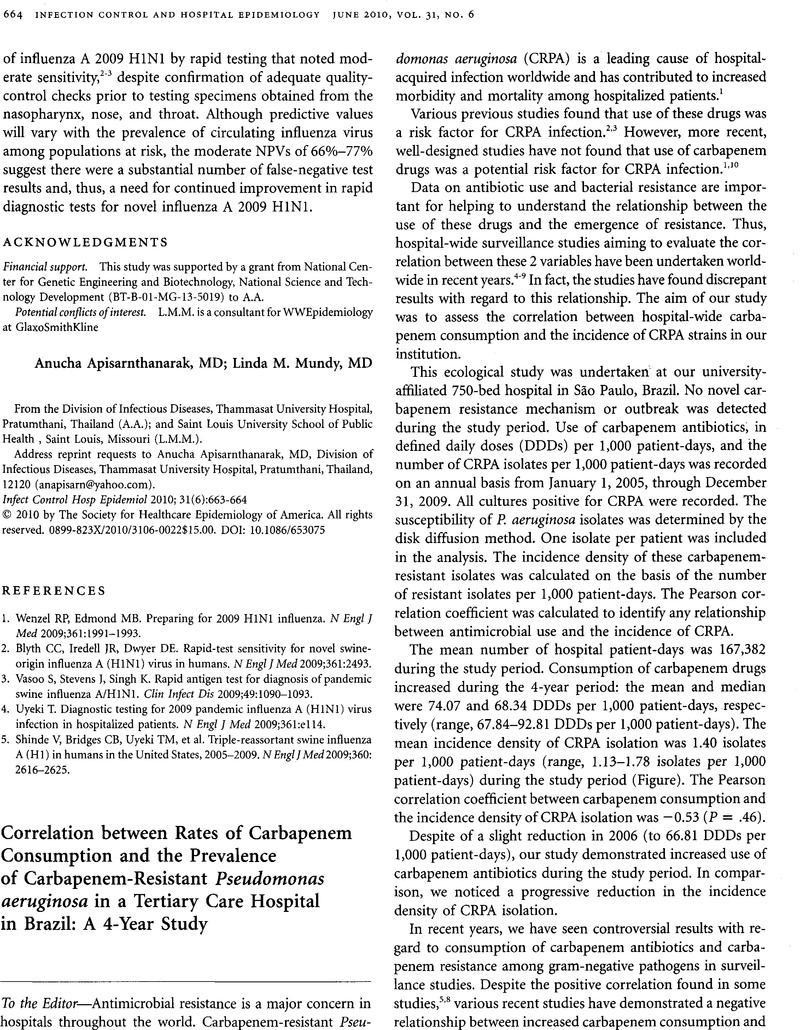Crossref Citations
This article has been cited by the following publications. This list is generated based on data provided by Crossref.
Cantón, Rafael
and
Morosini, María-Isabel
2011.
Emergence and spread of antibiotic resistance following exposure to antibiotics.
FEMS Microbiology Reviews,
Vol. 35,
Issue. 5,
p.
977.
Rossi, F.
2011.
The Challenges of Antimicrobial Resistance in Brazil.
Clinical Infectious Diseases,
Vol. 52,
Issue. 9,
p.
1138.
Guzmán-Blanco, Manuel
Labarca, Jaime A.
Villegas, Maria Virginia
and
Gotuzzo, Eduardo
2014.
Extended spectrum β-lactamase producers among nosocomial Enterobacteriaceae in Latin America.
The Brazilian Journal of Infectious Diseases,
Vol. 18,
Issue. 4,
p.
421.
Labarca, Jaime A
Salles, Mauro José Costa
Seas, Carlos
and
Guzmán-Blanco, Manuel
2014.
Carbapenem resistance inPseudomonas aeruginosaandAcinetobacter baumanniiin the nosocomial setting in Latin America.
Critical Reviews in Microbiology,
p.
1.
Hurst, Amanda L.
Olson, Daniel
Somme, Stig
Child, Jason
Pyle, Laura
Ranade, Daksha
Stamatoiu, Alexandra
Crombleholme, Timothy
and
Parker, Sarah K.
2015.
Once-Daily Ceftriaxone Plus Metronidazole Versus Ertapenem and/or Cefoxitin for Pediatric Appendicitis.
Journal of the Pediatric Infectious Diseases Society,
p.
piv082.
Gude, Sai Sreeya
Venu Gopal, Shravya
Marasandra Ramesh, Harshita
Vuppalapati, Sravya
Peddi, Nikhil Chowdary
and
Gude, Sai Sravya
2022.
Unraveling the Nature of Antibiotics: Is It a Cure or a New Hurdle to the Patient Treatment?.
Cureus,





